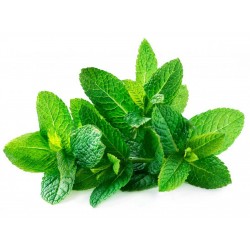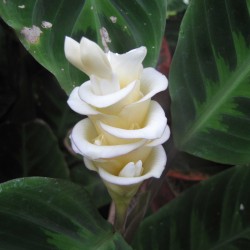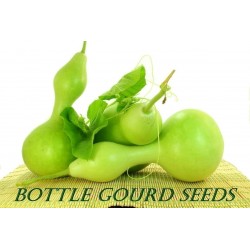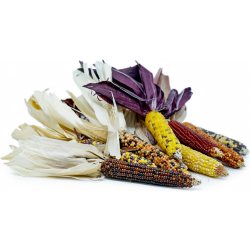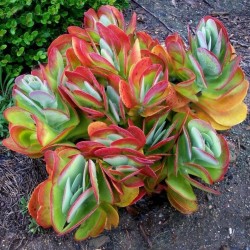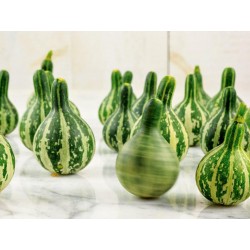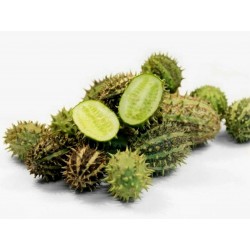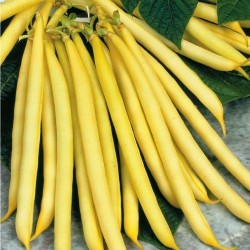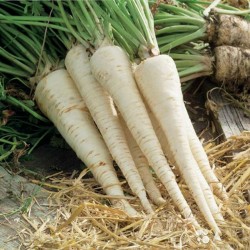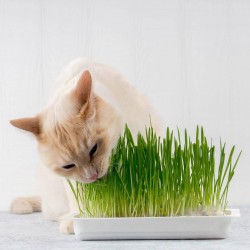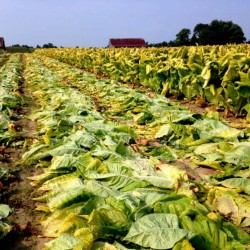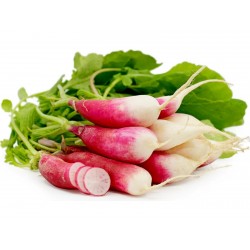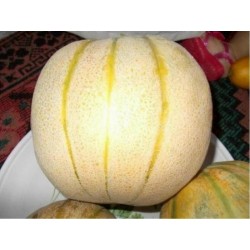Seeds Gallery EU,
5/
5
<!DOCTYPE html>
<html>
<head>
<meta http-equiv="Content-Type" content="text/html; charset=UTF-8" />
</head>
<body>
<h2><strong>Henna, Henna Tree Seeds (Lawsonia inermis)</strong></h2>
<h2><span style="color: #ff0000;"><strong>Price for Package of 10 seeds.</strong></span></h2>
<p>Henna (Lawsonia inermis, also known as hina, the henna tree, the mignonette tree, and the Egyptian privet) is a flowering plant and the sole species of the Lawsonia genus. The English name "henna" comes from the Arabic حِنَّاء (ALA-LC: ḥinnāʾ; pronounced [ħɪnˈnæːʔ]) or, colloquially حنا, loosely pronounced as /ħinna/.</p>
<p>The name henna also refers to the dye prepared from the plant and the art of temporary body art (staining) based on those dyes (see also mehndi). Henna has been used since antiquity to dye skin, hair and fingernails, as well as fabrics including silk, wool and leather. The name is used in other skin and hair dyes, such as black henna and neutral henna, neither of which is derived from the henna plant.</p>
<p> </p>
<p>Historically, henna was used for cosmetic purposes primarily in Ancient India. It was also found to be used in the Arabian Peninsula, South Asia, Carthage and other parts of North Africa, and the Horn of Africa. Bridal henna nights remain an important custom in many of these areas, particularly among traditional families.</p>
<p> </p>
<p><strong>Description</strong></p>
<p>Henna is a tall shrub or small tree, standing 1.8 to 7.6 m tall (6 to 25 ft). It is glabrous and multi-branched, with spine-tipped branchlets. The leaves grow opposite each other on the stem. They are glabrous, sub-sessile, elliptical, and lanceolate (long and wider in the middle; average dimensions are 1.5–5.0 cm x 0.5–2 cm or 0.6–2 in x 0.2–0.8 in), acuminate (tapering to a long point), and have depressed veins on the dorsal surface.[2] Henna flowers have four sepals and a 2 mm (0.079 in) calyx tube, with 3 mm (0.12 in) spread lobes. Its petals are obvate, with white or red stamens found in pairs on the rim of the calyx tube. The ovary is four-celled, 5 mm (0.20 in) long, and erect. Henna fruits are small, brownish capsules, 4–8 mm (0.16–0.31 in) in diameter, with 32–49 seeds per fruit, and open irregularly into four splits.</p>
<p> </p>
<p><strong>Cultivation</strong></p>
<p>The henna plant is native to northern Africa, western and southern Asia, and northern Australasia, in semi-arid zones and tropical areas. It produces the most dye when grown in temperatures between 35 and 45 °C (95 and 113 °F).[7] During the onset of precipitation intervals, the plant grows rapidly, putting out new shoots. Growth subsequently slows. The leaves gradually yellow and fall during prolonged dry or cool intervals. It does not thrive where minimum temperatures are below 11 °C (52 °F). Temperatures below 5 °C (41 °F) will kill the henna plant.</p>
<p> </p>
<p><strong><em>Preparation and application</em></strong></p>
<p><strong>Body art</strong></p>
<p>Whole, unbroken henna leaves will not stain the skin. Henna will not stain skin until the lawsone molecules are made available (released) from the henna leaf. Dried henna leaves will stain the skin if they are mashed into a paste. The lawsone will gradually migrate from the henna paste into the outer layer of the skin and bind to the proteins in it, creating a fast stain.</p>
<p>Since it is difficult to form intricate patterns from coarse crushed leaves, henna is commonly traded as a powder[8] made by drying, milling and sifting the leaves. The dry powder is mixed with one of a number of liquids, including water, lemon juice, or strong tea, and other ingredients, depending on the tradition. Many artists use sugar or molasses in the paste to improve consistency and keep it stuck to the skin better. The henna mix must rest for 1 to 48 hours before use, to release the lawsone from the leaf matter. The timing depends on the crop of henna being used. Essential oils with high levels of monoterpene alcohols, such as tea tree, cajeput, or lavender, will improve skin stain characteristics. Other essential oils, such as eucalyptus and clove, are also useful but are too irritating and should not be used on skin.</p>
<p>The paste can be applied with many traditional and innovative tools, starting with a basic stick or twig. In Morocco, a syringe is common. In India, a plastic cone similar to those used to pipe icing onto cakes. In the Western world, a cone is common, as is a Jacquard bottle, which is otherwise used to paint silk fabric. A light stain may be achieved within minutes, but the longer the paste is left on the skin, the darker and longer lasting the stain will be, so it needs to be left on as long as possible. To prevent it from drying or falling off the skin, the paste is often sealed down by dabbing a sugar/lemon mix over the dried paste, or simply adding some form of sugar to the paste. After time the dry paste is simply brushed or scraped away.</p>
<p> </p>
<p>Henna stains are orange when the paste is first removed, but darkens over the following three days to a deep reddish brown. Soles and palms have the thickest layer of skin and so take up the most lawsone, and take it to the greatest depth, so that hands and feet will have the darkest and most long-lasting stains. Some also believe that steaming or warming the henna pattern will darken the stain, either during the time the paste is still on the skin, or after the paste has been removed. It is debatable whether this adds to the color of the end result as well. After the stain reaches its peak color, it holds for a few days, then gradually wears off by way of exfoliation.</p>
<p> </p>
<p><strong><em>Hair dye</em></strong></p>
<p><strong>History</strong></p>
<p>Henna has been used as a cosmetic hair dye for 6,000 years. In Ancient Egypt, it is known to have been worn. Henna has also traditionally been used for centuries in other parts of North Africa, the Horn of Africa, the Arabian Peninsula, the Near East and South Asia.</p>
<p> </p>
<p>In Ancient Egypt, Ahmose-Henuttamehu (17th Dynasty, 1574 BCE): Henuttamehu was probably a daughter of Seqenenre Tao and Ahmose Inhapy. Smith reports that the mummy of Henuttamehu's own hair had been dyed a bright red at the sides, probably with henna.</p>
<p> </p>
<p>In Europe, henna was popular among women connected to the aesthetic movement and the Pre-Raphaelite artists of England in the 1800s. Dante Gabriel Rossetti's wife and muse, Elizabeth Siddal, had naturally bright red hair. Contrary to the cultural tradition in Britain that considered red hair unattractive, the Pre-Raphaelites fetishized red hair. Siddal was portrayed by Rossetti in many paintings that emphasized her flowing red hair.[10] The other Pre-Raphaelites, including Evelyn De Morgan and Frederick Sandys, academic classicists such as Frederic Leighton, and French painters such as Gaston Bussière and the Impressionists further popularized the association of henna-dyed hair and young bohemian women.</p>
<p> </p>
<p>Opera singer Adelina Patti is sometimes credited with popularizing the use of henna in Europe in the late 1800s. Parisian courtesan Cora Pearl was often referred to as La Lune Rousse (the red-haired moon) for dying her hair red. In her memoirs, she relates an incident when she dyed her pet dog's fur to match her own hair. By the 1950s, Lucille Ball popularized "henna rinse" as her character, Lucy Ricardo, called it on the television show I Love Lucy. It gained popularity among young people in the 1960s through growing interest in Eastern cultures.</p>
<p>Muslim men may use henna as a dye for hair and most particularly their beards. This is considered sunnah, a commendable tradition of the Prophet Muhammad. Furthermore, a hadith (narration of the Prophet) holds that he encouraged Muslim women to dye their nails with henna to demonstrate femininity and distinguish their hands from those of men. Thus, some Muslim women in the Middle East apply henna to their finger and toenails as well as their hands.</p>
<p> </p>
<p><strong>Today</strong></p>
<p>Commercially packaged henna, intended for use as a cosmetic hair dye, is available in many countries, and is now popular in India, as well as the Middle East, Europe, Australia, Canada and the United States. The color that results from dying with henna depends on the original color of the hair, as well as the quality of the henna, and can range from orange to auburn to burgundy. Henna can be mixed with other natural hair dyes including Cassia Obovata for lighter shades of red or even blond, or with indigo to achieve brown and black shades. Some products sold as "henna" include these other natural dyes. Others may include metal salts that can interact with other chemical treatments, or oils and waxes that may inhibit the dye, or even chemical dyes which are common allergens. Any product that comes in a cream, block, or paste form has some sort of additives.</p>
<p> </p>
<p>As with henna in body art, the dried leaf powder should be mixed with a mild acid such as lemon juice, orange juice, or vinegar and left to stand. The resulting paste is then applied to the hair, and covered with plastic wrap to keep it from drying out. This paste should be left in the hair for several hours in order for the dye to permanently bind to the hair strands. The paste is then washed away leaving hair that is permanently dyed. Sometimes henna is mixed with hot or boiling water and used immediately. This gives a color that may fade, and which is not as rich or deep.</p>
<p> </p>
<p><strong>Traditions of henna as body art</strong></p>
<p>The different words for henna in ancient languages imply that it had more than one point of discovery and origin, as well as different pathways of daily and ceremonial use.</p>
<p>Henna has been used to adorn young women's bodies as part of social and holiday celebrations since the late Bronze Age in the eastern Mediterranean. The earliest text mentioning henna in the context of marriage and fertility celebrations comes from the Ugaritic legend of Baal and Anath,[14] which has references to women marking themselves with henna in preparation to meet their husbands, and Anath adorning herself with henna to celebrate a victory over the enemies of Baal. Wall paintings excavated at Akrotiri (dating prior to the eruption of Thera in 1680 BCE) show women with markings consistent with henna on their nails, palms and soles, in a tableau consistent with the henna bridal description from Ugarit.[15] Many statuettes of young women dating between 1500 and 500 BCE along the Mediterranean coastline have raised hands with markings consistent with henna. This early connection between young, fertile women and henna seems to be the origin of the Night of the Henna, which is now celebrated worldwide.</p>
<p> </p>
<p>The Night of the Henna was celebrated by most groups in the areas where henna grew naturally: Jews,[16] Muslims,[17] Sikhs, Hindus, Christians and Zoroastrians, among others, all celebrated marriages and weddings by adorning the bride, and often the groom, with henna.</p>
<p> </p>
<p>Across the henna-growing region, Purim,[16] Eid,[18] Diwali,[19] Karva Chauth, Passover, Nowruz, Mawlid, and most saints' days were celebrated with some henna. Favorite horses, donkeys, and salukis had their hooves, paws, and tails hennaed. Battle victories, births, circumcision, birthdays, Zār, as well as weddings, usually included some henna as part of the celebration. When there was joy, there was henna, as long as henna was available.</p>
<p> </p>
<p>Henna was regarded as having Barakah ("blessings")[where?][when?], and was applied for luck as well as joy and beauty.[20] Brides typically had the most henna, and the most complex patterns, to support their greatest joy, and wishes for luck. Some bridal traditions were very complex, such as those in Yemen, where the Jewish bridal henna process took four or five days to complete, with multiple applications and resist work.</p>
<p> </p>
<p>The fashion of "Bridal Mehndi" in Pakistan, Northern Libya and in North Indian diasporas is currently growing in complexity and elaboration, with new innovations in glitter, gilding, and fine-line work. Recent technological innovations in grinding, sifting, temperature control, and packaging henna, as well as government encouragement for henna cultivation, have improved dye content and artistic potential for henna.</p>
<p> </p>
<p>Though traditional henna artists were Nai caste in India, and barbering castes in other countries (lower social classes), talented contemporary henna artists can command high fees for their work.[citation needed] Women in countries where women are discouraged from working outside the home can find socially acceptable, lucrative work doing henna.[21] Morocco, Mauritania,[22] Yemen, Libya, Somalia, Sudan, as well as India and many other countries have thriving women's henna businesses. These businesses are often open all night for Eid, Diwali and Karva Chauth. Many women may work together during a large wedding, wherein hundreds of guests have henna applied to their body parts. This particular event at a marriage is known as the Mehndi Celebration or Mehndi Night, and is mainly held for the bride and groom.</p>
<p> </p>
<p><strong>Health effects</strong></p>
<p>Henna is known to be dangerous to people with glucose-6-phosphate dehydrogenase deficiency (G6PD deficiency), which is more common in males than females. Infants and children of particular ethnic groups, mainly from the Middle East and North Africa, are especially vulnerable.[24] Though user accounts cite few other negative effects of natural henna paste, save for occasional allergic reactions, pre-mixed henna body art pastes may have ingredients added to darken stain, or to alter stain color. The health risks involved in pre-mixed paste can be significant. The United States Food and Drug Administration (FDA) does consider these risks to be adulterants and therefore illegal for use on skin.[25] Some pastes have been noted to include: silver nitrate, carmine, pyrogallol, disperse orange dye, and chromium.[26] These have been found to cause allergic reactions, chronic inflammatory reactions, or late-onset allergic reactions to hairdressing products and textile dyes.</p>
</body>
</html>
MHS 63
